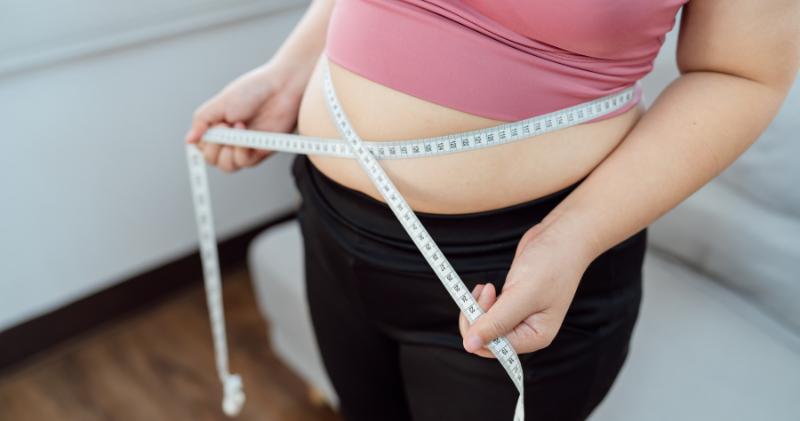You may look thin on the outside — but your belly fat could still be harming your heart.
Does this sound familiar? Many South Asians appear slim yet face high risks of heart disease and diabetes. The culprit might be hiding inside your body, invisible to the mirror.
What Is Abdominal Fat?
When we talk about belly fat, we usually think about the fat we can pinch under our skin — called subcutaneous fat. But there’s another type of fat that’s much more dangerous: visceral fat.
Visceral fat is the fat that wraps around your internal organs like your liver, pancreas, and intestines. You can’t see or feel it from the outside.
Think of it this way: It’s like fat hiding deep inside your car’s engine, not just on the surface. You might have a shiny, clean-looking car, but problems could be building up where you can’t see them.
This hidden fat isn’t just taking up space — it’s actively harmful. Visceral fat releases chemicals that cause inflammation throughout your body and can damage your heart and blood vessels.
According to the American Heart Association, this type of fat is linked to higher risks of:
- Heart disease
- Type 2 diabetes
- High blood pressure
- Abnormal cholesterol levels
Why It Matters for South Asians
South Asians face special risks when it comes to belly fat:
- We store more fat around our organs, even when our weight seems normal
- We typically have less muscle mass than other ethnic groups
- We develop insulin resistance (when your body doesn’t use insulin properly) at lower body weights
- Our body fat percentage is usually higher even when we look thin
This pattern is sometimes called “TOFI” — Thin Outside, Fat Inside. Research from the MASALA Study (Mediators of Atherosclerosis in South Asians Living in America) found that South Asians have more visceral fat compared to other ethnic groups, even at the same body mass index (BMI).
This is why waist size, not just weight or BMI, is especially important for South Asians to monitor.
How to Know If You're at Risk
You might be at risk for unhealthy visceral fat if:
Your waist measures:
- More than 90 cm (35.5 inches) for men
- More than 80 cm (31.5 inches) for women
You have any of these other warning signs:
- High blood pressure (above 130/80)
- High blood sugar or prediabetes (fasting blood sugar above 100 mg/dL)
- High triglycerides (above 150 mg/dL)
- Low HDL cholesterol (below 40 mg/dL for men, below 50 mg/dL for women)
Even if you look slim, having a slightly rounded belly or any of these warning signs could mean you have unhealthy levels of visceral fat.
What You Can Do About It

The good news? Visceral fat responds well to lifestyle changes! Here are simple steps that can make a big difference:
Move More
- Walk daily for 30 minutes — this alone can reduce visceral fat by 20% according to research published in the Journal of the American Medical Association
- Do strength training twice a week — building muscle helps your body process sugar better
- Reduce sitting time — get up and move around for 5 minutes every hour
Eat Smarter
- Reduce added sugar — especially in tea, coffee, and sweet drinks
- Cut down on fried snacks — samosas, pakoras, and bhajias should be occasional treats, not daily snacks
- Choose whole grains — brown rice or whole wheat roti instead of white
- Add more protein — dal, fish, chicken, eggs, or tofu help maintain muscle
- Include healthy fats — nuts, seeds, and olive oil are better than ghee or butter
Manage Stress and Sleep
- Aim for 7-8 hours of quality sleep — poor sleep increases hunger hormones
- Practice stress reduction — yoga, meditation, or simply deep breathing for 10 minutes daily
- Connect with loved ones — social support reduces stress hormones that promote fat storage
Talk to Your Doctor
Even if you’re thin, ask your doctor about:
- Measuring your waist circumference — this is not a routine part of most check-ups, so you may need to request it
- Checking your blood sugar, cholesterol, and triglycerides — these tests can reveal hidden risks
- Discussing your family history — if diabetes or heart disease runs in your family, you may need more careful monitoring
Pro tip: Write down your questions before your appointment so you don’t forget anything important.
Small Changes, Big Results
Remember, reducing visceral fat doesn’t mean you need to become extremely thin. Even a modest 5-10% reduction in your weight can significantly lower your visceral fat and reduce your risk of heart disease and diabetes.
The World Health Organization notes that South Asians often develop heart disease 10 years earlier than other populations. But this doesn’t have to be your future. By understanding the unique risks we face and taking action now, you can protect your heart for years to come.
Don’t wait until there’s a problem. The best time to start caring for your heart is today.
This article is based on guidelines from the World Health Organization, research from the MASALA Study at the National Institutes of Health, and recommendations from the American Heart Association and Indian Council of Medical Research.


